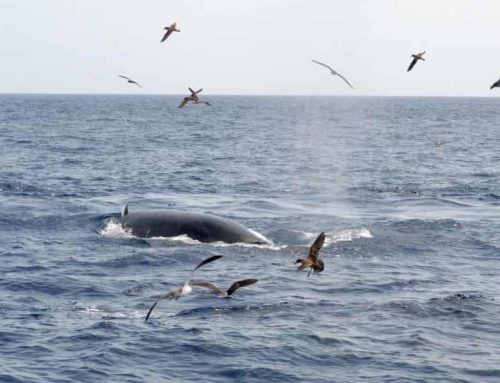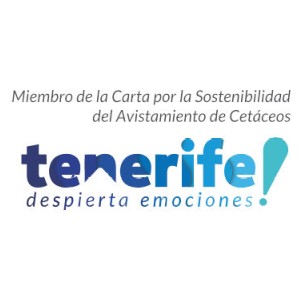The importance of the plankton in the ocean
Committed to all quality standards.
The word plankton was first used in 1887 by German scientist Victor Hensen. With it, he referred to a group of plant and animal organisms, mostly microscopic, present in salty or fresh waters that move driven by currents.
These diverse organisms populate the oceans around the world but tend to be more abundant in the colder seas, i.e: distant from the equator.
Their role is essential in the marine food chain and they are usually classified into two categories: phytoplankton or plankton from vegetable origin and zooplankton or animal plankton.
Two tiny but vital biological organisms
In the marine food chain, or trophic pyramid, plankton is the base. The energy of the sun is what fosters the organic matter that is derived from phytoplankton as primary production, from which zooplankton feed.
Large marine cetaceans feed on the zooplankton, as can be seen in the Atlantic on sail trips for whale watching in Tenerife, for example. It is also the daily diet of large fish, seals, and birds. And that cycle continues with those large eaters returning it to the sea through their waste.
Phytoplankton is made up of a very high percentage of the so-called cyanobacteria and unicellular algae, which nourish through photosynthesis. And that’s not only the basis for feeding zooplankton, it also produces more than 80% of the oxygen on the planet. These tiny organisms that form phytoplankton are called autotrophs because of the way they feed, and they are usually found no more than 150 ft below the sea surface, since they need sunlight to survive as well as the presence of some minerals in the water.
Zooplankton, on the other hand, abounds in the upper part of the sea, since that is where the organic substance with which they feed from is found.
Many life forms compose zooplankton: worms, mollusks, fish larvae, tiny crustaceans and different protozoa, and scientists have classified them as meroplankton and holoplankton. The first group encompasses all microorganisms considered plankton only in their larval stage, and the second group refers to those that remains as plankton throughout their entire life.
Many of these species are transparent and others even shine or radiate bioluminescence in deep waters. This characteristic is vital for reproduction purposes and as a mechanism to scare away their predators. They have a somewhat limited mobility and their fluctuation is mainly due to ocean currents, although they are able to move vertically for feeding on the surface during night hours.
Why is plankton so vital?
Although it cannot be seen with the naked eye, as it can be done with dolphins and whales in Tenerife boat trips while enjoying the immensity of the sea, thanks to scientific investigators the vital importance of plankton could have been determined, both for that large marine fauna and for all life on the planet.
Plankton represents the highest available biomass in terms of living matter and energy in all aquatic environments. In combination with the so-called primary producers in aquatic systems, it is the first link in the food chain.
The following are scientific facts about the importance of ocean plankton:
- Recent studies have determined that at least 80% of the oxygen in the atmosphere comes from phytoplankton and in the main production of the entire planet its contribution reaches almost 50%.
- All plankton organisms can be taken as bioindicators, since they help detect the changes that can occur in the ecosystems where they live. They respond quickly to environmental conditions, due to their sensitivity to pollutants and their short life cycle.
- Ocean plankton influence on climate is well-known, however all the studies to determine it with greater precision are still under development, as well as the refinement of biostatistical models to climate change analysis.
- It has been proven that plankton act as a regulator of the climate in seas and coasts. Hence the importance of continuing further studies on it and to encourage all humans in reducing the risk of damage or loss of biomass due to environmental changes.
Plankton in the food industry
In the last few decades, biotechnology has developed plankton crops to produce food for use in fishing. Besides, it is used as a biomedical element to grade water toxicity and even to obtain some natural pigments.
Derived from that plankton crop success, nowadays there’s a boom in the plankton farming industry oriented to produce essential proteins for human nutrition. A good example of this is spirulina, which is obtained from two different species of cyanobacteria. These microalgae are a rich source of minerals and vitamins that biotechnology has been developing with great success in the food industry.
Similar is the case of krill oil, which is obtained from certain species of crustaceans that feeds exclusively on phytoplankton and zooplankton.
















